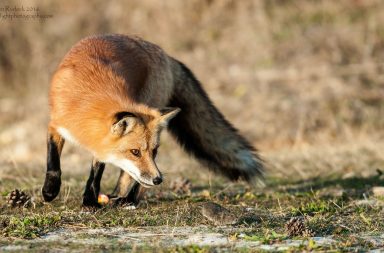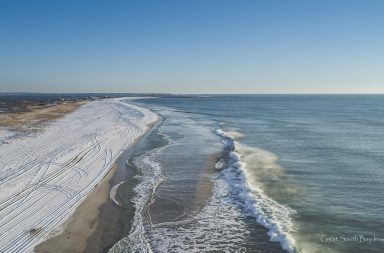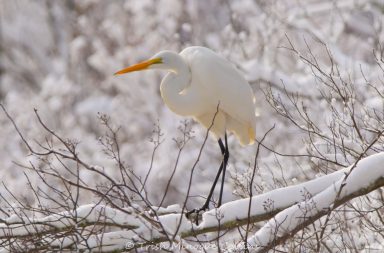EASTERN BLUEBIRD
A bird that seems to have captured our hearts, the Eastern Bluebird is New York State’s Bird. A beautiful sky-blue bird with rusty red breast and white belly, it is striking, especially when sitting in the sun. The female is a grayer blue and more subtle in color, but also quite beautiful. It is one of three bluebirds found in North America, the other two being the Western Bluebird and the Mountain Bluebird, and all are part of the Thrush family. Our Bluebird sings a musical “chur-a-lee” type song, and is sung by both sexes.
Eastern Bluebirds like a mix of small trees and shrubs, as well as pastures, golf courses and open woodlands. Critical to their habitat must be perches, such as low branches, fences and posts, to be used for both singing and hunting. They capture their prey by “hawking” (flying out from a perch, grabbing an insect and flying back), as well as hunting on the wing. Prey consists of small flying insects, crickets, grasshoppers, spiders and snails. In winter their diet includes fruit/berries.
Competition for nest sites is fierce between the Bluebirds and Tree Swallows (who like the same kind of cavity/box and location). Since only one pair of bluebirds and one pair of swallows will vie for one location, it is often successful for a pair of nest boxes to be placed fairly close to one another. Once a nest is set up, the birds will nest tolerantly near to each other.
Pair bonding between bluebirds only lasts for one season, and during that time the pair are not particularly faithful to each other. DNA tests have shown different nestlings in the same nest to have different parents. “Divorce” is also fairly common if a first nest fails. There are often “nest helpers” found around a nest; usually a juvenile from the previous season or an unmated adult.
Courtship consists of the male singing from a perch in his established territory, with some flying in lopsided or fluttering fashion, lifting and quivering wing flaps, and rocking at the nest hole with head going in and out. Mate feeding also occurs. A pair is formed when the female enters the nest cavity/box.
Bluebirds are cavity nesters and will use old woodpecker holes, also going readily to nest boxes. There are usually 4-5 eggs laid with the female doing all of the incubation, lasting about 2 weeks. During incubation you can see the female doing behavior called “tremble-thrust”, where she will poke the nesting material and shake it around to dislodge insects and parasites. The nestling phase lasts 16-20 days, and fledgling stage about 3-4 weeks. A second nest is often started (in the southern states sometimes 3 nests a season), and it is common to see the male still feeding fledglings while the female is incubating a second brood.
Bluebird predators consist of Kestrels, Cooper’s & Sharp-shinned Hawks, Red-tailed Hawks, Shrikes, snakes, raccoons, opossums and domestic cats. Since the nest hole is too small there is not any problem with cowbird egg dumping.
Once common, the Eastern Bluebird has declined in drastic numbers due to Starling nest raiding, cavity habitat loss, pesticides and severe southern winter storms. Public awareness campaigns have resulted in many “Bluebird Societies” and various nesting programs (nest boxes and trails), all of which have been very successful in reversing the decline. The population numbers are coming back steadily.
Some Bluebirds migrate as far south as Central America, but many stay around all winter as well. Those that stay form loose flocks consisting of 5-10 (sometimes more) individuals, usually adult experienced birds. They will roost in cavities or nest boxes to keep warm. We see them on LI all winter in various locations such as Upland Farms and EPCAL/Calverton.
Bluebirds have been known to live 6-7 years, but the majority usually only 2 years. Early colonists called them the “blue robin”. “The Bluebird of Happiness”, “Bluebirds flying somewhere over the rainbow” and “The sky on it’s back” are all examples of the love and symbolism we attach to this very beautiful bird … the Eastern Bluebird.

Grace Scalzo | Bluebird Eggs

Grace Scalzo | Nestlings

Grace Scalzo | Fledgling

Brian Carr
More photos on pages 2 and 3!



